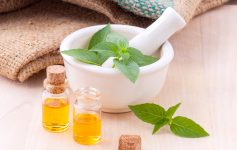As discussed, the role of various environmental triggers such as toxins, food dyes, gluten, stress, and prenatal environment can all impact a child’s health and risk for disease. One common link in them all seems to be the impact these factors have on the microbiome.
So… first let’s take a look at the belly bugs again!
1. The Role of Diet (On Your Belly Bugs)
Diet rapidly and reproducibly alters the human gut microbiome (microbial communities that exist within the mucosal surfaces of our body). This means you aren’t domed to suffer the negative consequences of a long-term diet of Twinkies, Fruit Loops, Twizzlers, and soda pop forever. In fact, more powerful than taking probiotics, you can obtain and maintain optimal microbiota by eating a whole food, organic diet that includes a colorful rainbow of plant foods. In this way, you won’t be polluting your body with pesticides, herbicides, chemicals, hormones, and antibiotics. Rather, you’ll be feeding and protecting your healthy belly bugs with a diet high in beneficial compounds and plant fibers.
In fact, a recent study in Nature demonstrated how short-term consumption of diets composed of entirely animals or plants, “alters microbial community structure and overwhelms inter-individual differences in microbial gene expression.”
Interestingly, animal-based diets increased Bilophila wasdsworthia, bile-tolearnt microorganisms (Alistipes, Bilophila and Bacteroides) and decreased Firmicutes which metabolize plant compounds (Roseburia, Eubaceterium rectale and Ruminococcus bromii). The authors concluded:
In concert, these results demonstrate that the gut microbiome can rapidly respond to altered diet, potentially facilitating the diversity of human dietary lifestyles. (1)
Mice studies have also demonstrated a rapid change in microbiome from dietary interventions. (2)
However, it’s important to keep in mind that just because one has a healthy gut doesn’t mean that other factors such as hormonal balance, metabolism, and neurological health will automatically balance out. In other words, certain supportive nutrients that can help heal damage from past stressors, nutrient deficiencies, or unintentional environment exposures may be needed by some.
2. Become a Fat Head-Fish Oil Helps Children’s Behavior
Most children do well with a fish oil supplement that is high in DHA and EPA, especially in a world where diets are loaded with inflammatory fats and outnumber the ratio of healthy, anti-inflammatory fats that are found in foods such as fish. Furthermore, you literally are a fat head!
Therefore, supplying the brain with its building blocks for optimal signaling is important to keep your body and mind healthy and motivated for positive health decisions!
In a randomized, double-blind, placebo-controlled, stratified, parallel-group trial, 200 8-16 year old
children were divided into a treatment group of either a fruit drink containing 1 g/d of omega-3 and a placebo-control group with just the fruit drink. (I’m going to hold back on commenting on the means of delivery of essential fatty acids.)
CONCLUSIONS:Findings provide initial evidence that omega-3 supplementation can produce sustained reductions in externalizing and internalizing behavior problems. Results are the first to
report improvements in caregiver behavior, and to establish this improvement as a part-mechanism for the efficacy of omega-3. (3)
Furthermore, a recent study demonstrated a strong positive association between the levels of omega-3 fatty acids in the breast milk of moms from 28 countries to the cognitive performance of their children. (4)
3. Optimize Circulation and Supplementation
Here’s an example of how some children who have a diagnosis may benefit from a specific supplementation program (5-6).
A recent study tested the efficacy of a Ginkgo biloba special extract (EGb 761®) and its correlation with brain electrical activity in children with disgnosed ADHD combined type.
CONCLUSION: This preliminary evidence suggests that EGb 761® at a maximal dosage of 240 mg daily might be a clinically useful alternative treatment for children with ADHD, but further evidence is required before firm conclusions can be made.
Other supplements can be tailored based on a child’s symptoms and health history.
4. Essential Oils (EO’s)
These are one of my favorite wellness tools that are SOO effective for children and grownups that I work
with.
Essential Oils Effect Emotions and Behavior in
Several Ways:
1. The act of inhalation ignites a calming response on vagal tone (rest and digest mode).
2. The sense of smell ignites the limbic region in the back of the olfactory bulb located in the amygdala, an area of the brain which controls emotional response. There, odorant molecules will affect the release and transmission of brain chemicals.
3. EO’s modulate stress response and have been shown to decrease cortisol, thus, calming the brain and
body.
4. Smells can affect methylation patterns to impact DNA and emotional expression.
5. Oxygen rich molecules (some monoterpenes and sesquiterpenes) cross blood-brain barrier, optimizing focus and concentration.
6. Polyphenols present in EO’s can positively impact inflammation and the gut microbiome which impacts mood.
As you can see, you have a lot of power and tools at your fingertips (or nose) which can help you live a longer, healthier, happier life.
Sources:
(1)David, L. Maurice, C. Carmody, R. Gootenberg, D. Button, J. Wolfe, B, et al. Nature. 505, 559-563. January 23, 2014. doi:10.1038/nature12820
(2)Turnbaugh, P, Ridaura, V, Faith, J, Rey, F, Knight, R, Gofrdon, J. The Effect of Diet on the Human Gut Microbiome: A Metagenomic Analysis in Humanized Gnotobiotic Mice. Sci Transl Med. November 11, 2009:1 (6); 6ra14 DOI: 10.1126/scitranslmed.3000322
(3) Reduction in behavior problems with omega-3 supplementation in children aged 8-16 years: a randomized, double-blind, placebo-controlled, stratified, parallel-group trial.J Child Psychol Psychiatry. 2014 Aug 22. doi: 10.1111/jcpp.12314. [Epub ahead of print]
(4) Lassek, WD & Gulin, SC. W.D. DOI: 10.1016/j.plefa.2014.07.017
(5) Uebel-von Sandersleben H, Rothenberger A, Albrecht B, Rothenberger LG, Klement S, Bock N. Ginkgo biloba Extract EGb 761® in Children with ADHD. Z Kinder Jugendpsychiatr Psychother. 2014 Sep;42(5):337-47. doi: 10.1024/1422-4917/a000309.
(6)
http://www.greenmedinfo.com/blog/ginkgo-biloba-extract-improves-adhd-symptoms-children
Essential Oils References:
·Debiec, J, Sullivan, RM. Intergenerational transmission of emotional trauma through amygdala-dependent mother-to-infant transfer of specific fear. Proc Natl Acad Sci U S A. 2014 Jul 28. pii: 201316740. [Epub ahead of print] http://www.pnas.org/content/early/2014/07/23/1316740111.long
·Zabludovsky,K. Mother’s Fears Are Passed to Children Through Smell, Study Suggests. Newsweek. July 28, 2014.
·Mercola, J. Mother’s Fears Are Passed to Children Through Smell, Study Suggests. Mercola.com. August 14, 2014. http://articles.mercola.com/sites/articles/archive/2014/08/14/hereditary-trauma.aspx
·The Anxiolytic Effect of Aromatherapy on Patients Awaiting Ambulatory Surgery: A Randomized Controlled Trial. Evid Based Complement Alternat Med. 2013; 2013: 927419. Published online Dec 17, 2013. doi: 10.1155/2013/927419. (Bergamot)
·A systematic review on the anxiolytic effects of aromatherapy in people with anxiety symptoms. J Altern Complement Med. 2011 Feb;17(2):101-8. doi: 10.1089/acm.2009.0277. Epub 2011 Feb 10.
·Citrus aurantium L. essential oil exhibits anxiolytic-like activity mediated by 5-HT(1A)-receptors and reduces cholesterol after repeated oral treatment. BMC Complement Altern Med. 2013 Feb 23;13:42. doi: 10.1186/1472-6882-13-42. (Bitter Orange)
·LoBisco, S. The Smell of Pain: the Power of Olfaction in the Relief of Pain. NDNR. July 2014. http://ndnr.com/e-version/jul14/jul14.pdf.html
·Physicians for Social Responsibility. Cancer and Toxic Chemicals. http://www.psr.org/environment-and-health/confronting-toxics/cancer-and-toxic-chemicals.html.
·Antioxidative effects of lemon oil and its components on copper induced oxidation of low density lipoprotein. Arzneimittelforschung. 2001 Oct;51(10):799-805. PMID: 11715632
·Plant phenylpropanoids as emerging anti-inflammatory agents. Mini Rev Med Chem. 2011 Sep;11(10):823-35.
·D-Limonene: a review of its safety and clinical applications. Altern Med Rev. 2007 Sep;12(3):259-64. PMID: 18072821.
·Citrus peel use is associated with reduced risk of squamous cell carcinoma of the skin. Nutr Cancer. 2000;37(2):161-8. PMID: 11142088.
·Modulation of genotoxicity and DNA repair by plant monoterpenes camphor, eucalyptol and thujone in Escherichia coli and mammalian cells. Food Chem Toxicol. 2011 Sep;49(9):2035-45. doi: 10.1016/j.fct.2011.05.015. Epub 2011 May 19.
Disclaimer: This information is applicable ONLY for therapeutic, Grade A essential oils. This information DOES NOT apply to essential oils that have not been AFNOR and ISO standardized. There is no quality control in the United States and oils labeled as “100% pure” need only contain 5% of the actual oil. The rest of the bottle can be filled with fillers and sometimes toxic ingredients that can irritate the skin. This information is for information purposes only and is not intended to diagnose, treat, or prescribe for any illness.



